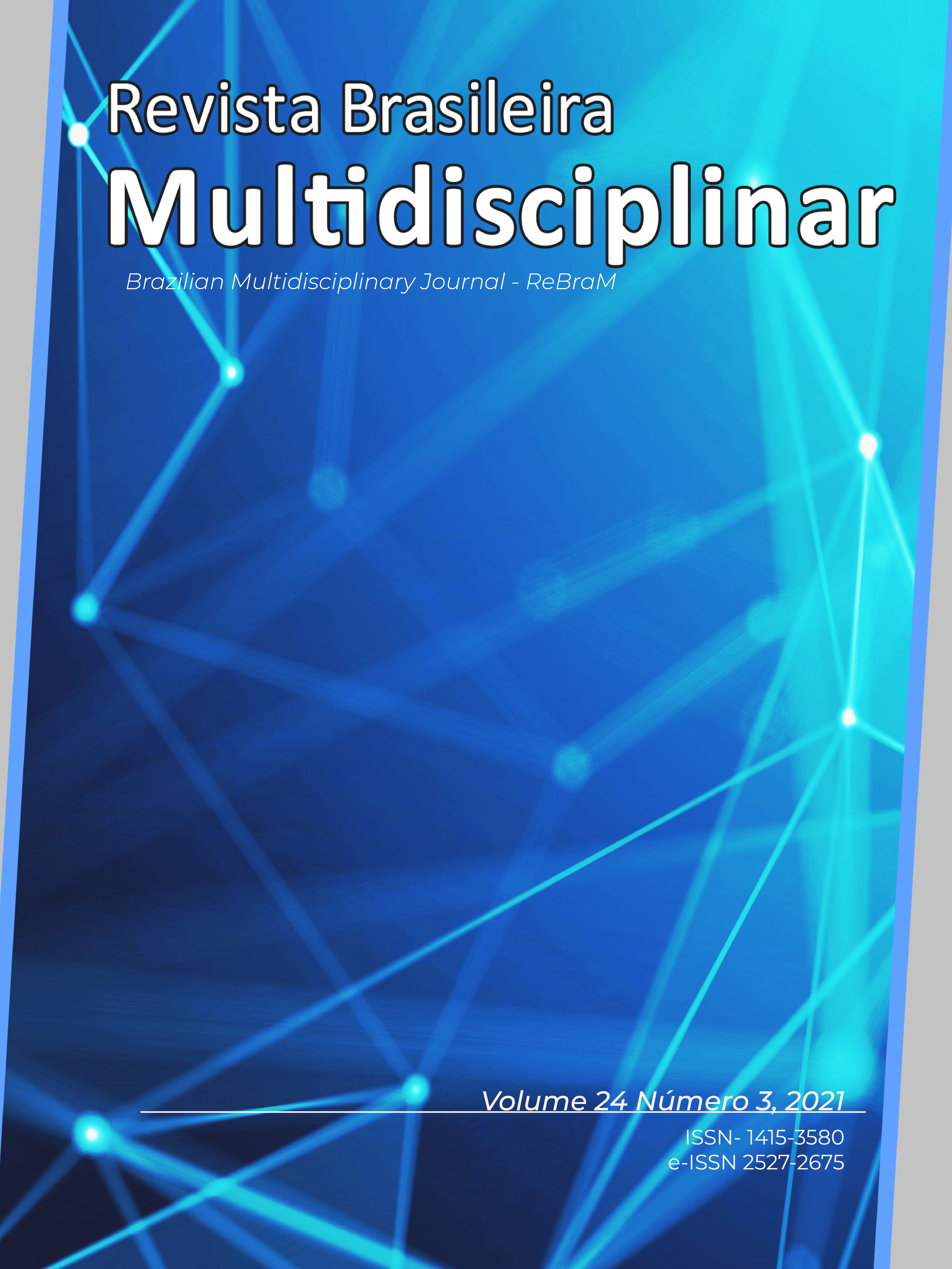Hematologia dos vertebrados: a série vermelha do sangue
Main Article Content
Abstract
Hematology comprises the study of blood and its components, such as red blood cells, white blood cells, platelets and plasma. In this study, the differences between the structures of vertebrate red blood cells and how each of these groups perform gas exchange and how oxygen transport occurs are indicated. The role of blood, responsible for the transport of nutrients, and gases, such as oxygen, and other components, such as hemoglobin, was highlighted. The objective was to evaluate the importance of blood and oxygen transport for humans and animals, as well as the differences in the red blood series in the vertebrate classes, their hematological characteristics and the role of hemoglobin in oxygen transport. The study pointed out that breathing is a process that consists of the absorption of oxygen from the environment and the elimination of carbon dioxide from the body, resulting from this aerobic process. The absorption of oxygen is essential for all classes of animals and its transport occurs through the hemoglobin molecule. In mammals, including humans, mature erythrocytes do not have nuclei, and are unable to reproduce, this allows the cell to have space to store hemoglobin and for erythrocytes to carry more oxygen; in birds, reptiles, amphibians and fish, mature red blood cells have a nucleus and because they have a nucleus, these cells have a fundamental characteristic, the ability to perform mitosis, which differentiates erythrocytes from mammals.
Downloads
Article Details

This work is licensed under a Creative Commons Attribution-NoDerivatives 4.0 International License.
• The author (s) warrant that the contribution is original and unpublished and that it is not in the process of being evaluated in other journal (s);
• The journal is not responsible for the opinions, ideas and concepts issued in the texts, as they are the sole responsibility of the author (s);
• Publishers have the right to make textual adjustments and to adapt the article to the rules of publication.
Authors retain the copyright and grant the journal the right of first publication, with the work simultaneously licensed under the Creative Commons Attribution License, which allows the sharing of work with acknowledgment of authorship and initial publication in this journal.
Authors are authorized to take additional contracts separately, for non-exclusive distribution of the version of the work published in this journal (eg publish in institutional repository or as book chapter), with acknowledgment of authorship and initial publication in this journal.
Authors are allowed and encouraged to publish and distribute their work online (eg in institutional repositories or on their personal page) at any point before or during the editorial process, as this can generate productive changes as well as increase the impact and citation of the published work (See The Effect of Free Access) at http://opcit.eprints.org/oacitation-biblio.html
References
ANDREAZZA, J., K. Modelagem e Simulação da Oxigenação Tecidual. Florianópolis, 2003. 130p. Dissertação (Mestrado em Engenharia Química). Universidade Federal de Santa Catarina, Florianópolis, SC.
BATISTETI, C., B., B.; CALUZI, J., J.; ARAÚJO, E., S., N., DE.; LIMA, S., G. (2007). O sistema de grupo sanguíneo Rh. Filosofia e História da Biologia, v. 2, p. 85-101.
BERLINCK, J., G., C. (2001). Atlas Visual – O corpo humano. 16ª ed, São Paulo, Ática S.A.
CAPITELLI, R.; CROSTA, L. (2013). Overview of psittacine blood analysis and comparative retrospective study of clinical diagnosis, hematology and blood chemistry in selected psittacine species. Veterinary Clinics of North America: Exotic Animal Practice, Texas, v. 16, p. 71-120.
DEAN, L. (2005). Blood Groups and Red Cell Antigens. Bethesda (MD). National Center for Biotechnology Information (US).
GOULART, C., E., S. (2004). Herpetologia, Herpetocultura e Medicina de Répteis. Rio de Janeiro: LF Livros de Veterinária, p.329.
GUIMARÃES, H., C., T. Os sistemas de grupos sanguíneos kell, kidd e duffy. Universidade Católica de Brasília. [s.d].
HARTENSTEIN, V. (2006). Blood Cells and Blood Cell Development in the Animal Kingdom. Annu. Rev. Cell Dev. Biol. 2006. 22:677–712.
HICKMAN JR, C., P.; ROBERTS, L., S.; KEEN, S.; EINSENHOUR, D., J.; LARSON, A.; ANSON, H. (2006). Princípios Integrados de Zoologia. Ed. 16º. Ed. Guanabara Koogan.
HILDEBRAND, M.; GOSLOW, G. (1995). Análise da Estrutura dos Vertebrados. Ed. 02. Editora Atheneu.
MACLEAY, J., M. (2001). Isoeritrólise neonatal. Journal of Equine Veterinary Science . 21 (3): 106-109. doi: 10.1016 / S0737-0806 (01) 70105-0.
MITCHELL, E. B.; JOHNS, J. (2008). Avian hematology and related disorders. Veterinary Clinics of North America: Exotic Animal Practice, v. 11, p. 501-522.
The man with the golden blood. Mosaic Science. 2014. Disponível em: https://mosaicscience.com/story/man-golden-blood/. Acesso em 28 out 2020.
OLIVEIRA, G. (2001). Fisiopatologia Aplicada. Universidade Federal da Bahia.
OLIVEIRA, M., B., S., C.; RIBEIRO, F., C.; VIZZONI, A., G. (2013). Conceitos básicos e aplicados em imuno-hematologia. Escola Politécnica da Saúde Joaquim Venâncio/Fundação Oswaldo Cruz. Rio de Janeiro, RJ.
ORR, R., T. (2000). Biologia dos Vertebrados. 5º ed. Editora Roca.
RANZANI-PAIVA, M. J. T.; SILVA-SOUZA, E. A. T. (2004). Hematologia de peixes brasileiros. (Ed.). Sanidade de organismos aquáticos. São Paulo: Varela.
SADO, R., Y.; CECHIN, F., E. (2016). Aspectos Gerais de Hematologia de Peixes. Técnicas de Manejo Agropecuário Sustentável. Curitiba.
SANTOS, V., S., dos. Tipos de respiração dos animais; Brasil Escola. 2020.
SATAKE, F.; PÁDUA, S., B.; ISHIKAWA, M., M., (2009). Distúrbios morfológicos em células sanguíneas de peixes em cultivo: uma ferramenta prognóstica. Manejo e sanidade de peixes em cultivo. Macapá: Embrapa-Amapá.
SILVA, M., N.; MONTEIRO, M., V., B. (2017). Hematologia Veterinária. Editora ed. Aedi, UFPA.
THRALL, M., A.; WEISER, G.; ALISSON, R., W.; CAMPBELL, T., W. (2015). Hematologia e Bioquímica Clínica Veterinária. – [2. ed.] – Rio de Janeiro: Guanabara Koogan.

